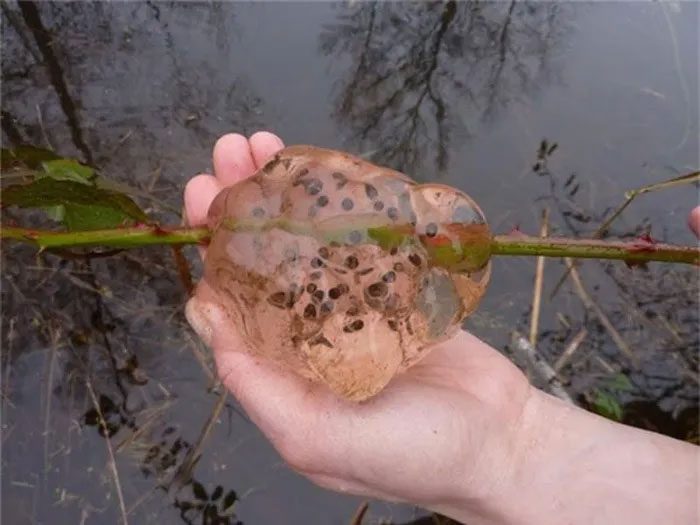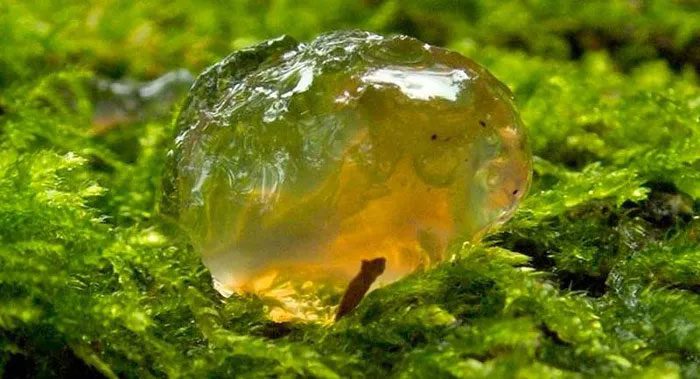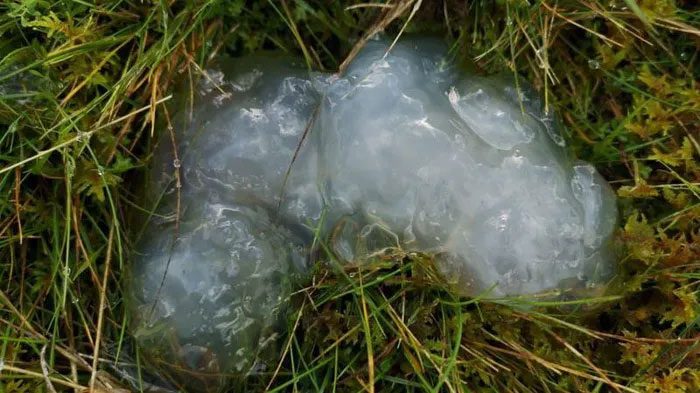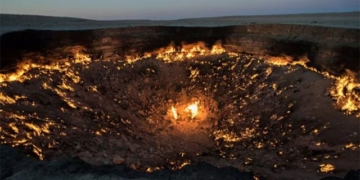Since ancient times, mysteries have always been a source of intrigue, leading scientists to scratch their heads in search of answers. Even today, despite the most advanced technologies and machinery, there are still some supernatural phenomena that remain unexplained. One notable example is the medical mystery surrounding the slime rain that once shocked the United States.
Panic as Rainfall Turns Out to be… Slime
This bizarre incident occurred on August 7, 1994, in Oakville, Washington. Around 3 AM, several residents heard a splattering sound outside and assumed it was a light rain, as a storm had passed through earlier. However, they noticed something unusual: this “rain” was flowing very slowly on their window panes, resembling a sticky glue rather than water.

Residents gathered the slime “raindrops” in their hands.
Upon stepping outside, the townspeople realized that it was not water but a viscous substance, leaving everyone bewildered as they had never encountered anything like it before. The slime was about the size of a grain of rice. Over the next three weeks, this strange rain fell a total of six times.
“When I was driving that night, the windshield wipers couldn’t clear away the slime, so I had to pull into a gas station. When I touched it, it felt very soft, like the jelly we often eat,” shared David Lacey, a police officer, recounting the bizarre rain.
What seemed like a rare occurrence with no lingering effects took a turn for the worse later that evening, as David and hundreds of residents in Oakville suddenly experienced shortness of breath. The symptoms of this illness were identical to those of the flu but more severe, with patients frequently suffering from nausea and unexplained dizziness, and no medication seemed to alleviate their condition.
This slime rain brought along an unknown disease, leaving even doctors “at a loss.” The police reported that nearly all the residents of Oakville were ill, with symptoms lasting anywhere from seven weeks to three months.

No one could explain what this slime was, only that it brought disease.
The peak of this mysterious illness came when dozens of cats and dogs suddenly died. Initially, people thought this was just a coincidence, but a resident named Dotty Hearn confirmed that her beloved cat died after coming into contact with the rain for just a few hours.
“I myself also suffered from this strange illness; when I went to the hospital, I was diagnosed with a severe inner ear infection. My cat soon passed away as well. If it wasn’t due to that rain, what else could explain it?” Dotty sadly recounted.
Evidence Exists, Yet It Remains a Medical Mystery
In light of the strange events occurring in the town, Dotty’s daughter, Sunny Barcliff, collected samples of the liquid for testing. Scientists were astounded to discover that the slime contained… human white blood cells.
Following various studies, they made another surprising discovery: the slime contained two types of bacteria, one of which is commonly found in the human digestive system. However, no one could determine what this “raindrop” was, or how it caused flu-like symptoms for the entire town.

The town of Oakville, where the slime rain led to a puzzling flu outbreak.
Dr. David Litle, who discovered the slime contained human white blood cells, brought the specimens to the Hazardous Liquid Response Team at the Central Washington Ecology Department for further examination. Staff there reported that the white blood cells were unique in that they lacked a nucleus, unlike those in humans.
The head of the response team, Mike Osweiler, speculated that the slime could be waste from an aircraft toilet. However, this theory was immediately dismissed by the Federal Aviation Administration, as liquid waste from commercial airplanes is dyed blue, while the slime was clear.
A more intriguing hypothesis suggested that the slime could be the result of exploding jellyfish. Fighter Squadron 354 had dropped several bombs in the Pacific Ocean off the coast of Washington during that time. It is possible that a bomb hit a swarm of jellyfish, leading to the slime rain over Oakville.
Paul Johnson, an emeritus professor of biology at the University of North Georgia, proposed that parts of the jellyfish could have been blasted into the atmosphere and accumulated within the storm. While animal rain is not a new phenomenon, the fact that there were six instances of slime rain in the city makes it hard to imagine jellyfish remnants floating in the air for that long.
On August 20, 1994, the Washington State Ecology Department conducted an analysis of the slime. Their scientist, Mike Osweiler, examined the Oakville slime and found several cells of varying sizes. This finding seemed to disprove earlier hypotheses about the slime being particulate matter, as the cells were without nuclei. Jellyfish, which are multicellular organisms, are made up of eukaryotic cells like many other animals, containing nuclei surrounded by organelles.
Prokaryotic cells lack nuclei and are typically seen in bacteria and archaea. Microbiologist Mike McDowell of the Washington State Public Health Department stated that he and his colleagues could not identify any structure through microscopic observation. They placed the slime in various microbiological media and attempted to isolate the bacteria. Reports from WSPHD noted the presence of two types of bacteria: Pseudomonas fluorescens and Enterobacter cloacae, both of which live in the digestive systems of humans or other mammals. They can also be found in environments where waste is collected and can move through water and aerosols.
Other theories suggested that this strange phenomenon could stem from new biological weapon testing or a biological attack by the military. Residents were suspicious of this possibility as they noticed military planes flying over Oakville frequently before the rain occurred.

Many theories exist about this slime, but none have fully clarified the situation.
One theory that captivated many suggested that the slime rain originated from military bombings conducted 80 km offshore from Oakville. This would have caused a jellyfish swarm to explode and fall like rain. This phenomenon is referred to as Star Jelly.
Despite the multitude of speculations, the incident remains unresolved, with no one able to provide a definitive explanation. Later, the Oakville incident was even “misrepresented” on the show Unsolved Mysteries on May 9, 1997. To this day, it remains one of the great mysteries in human history.
- Captured an image of a “flying saucer” passing by and disappearing right at the moment of a total solar eclipse
- The Kandahar incident: A nearly 4-meter-tall giant killed by U.S. special forces in the Middle East?
- Why has the iron element, which we are so familiar with on Earth, become the final material of the universe?




















































